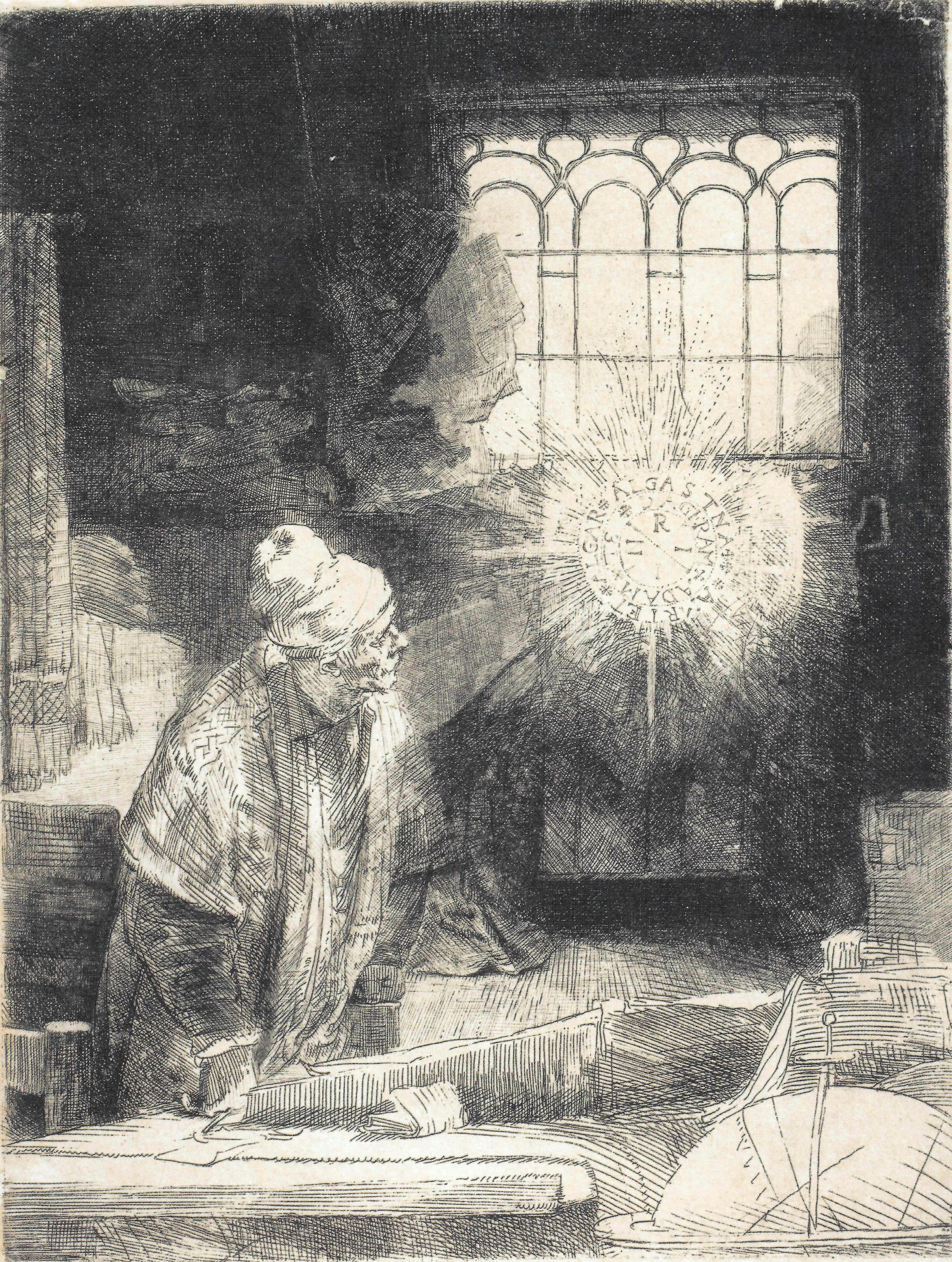A Scholar in his Study (Faust)
Rembrandt Harmenszoon van Rijn (Dutch, Leiden 1606–1669 Amsterdam)
If there has ever been a key to enter into the enchanted dimension that emanates from Rembrandt’s engravings, it is the understanding of his prodigious ability to dose bright landscapes on the plate, and to express dazzling light using only black and white means. In this respect, this print is one of the artist’s most important, since it interprets the symbolic, mystical value of light according to an iconography that is still shrouded in mystery. A great deal has been said on the actual subject of the scene and on the meaning behind its single compositional elements, interpreting it as the figure of an alchemist, intent on his experiments, or as a representation of Faust in the moment in which a vision is persuading him not to make any deals with the devil, according to a widely accepted interpretation. Others have instead sought the solution in esoteric contexts, intending the writing in the luminous apparition to be a reference to the Kabbalists of Hebrew mysticism, referring to the people Rembrandt would meet with in the Amsterdam ghetto. Others have interpreted the work as an allegory of Christian faith that guides human knowledge, represented by the old scholar, towards divine knowledge, of which it can be but a pale reflection, visible as if in a mirror.
The composition is based on two pictorial traditions: the iconography of “the scholar in an interior” and that of the “saint struck by a vision”. Whatever the real significance of the scene, what fascinates us is Rembrandt’s almost magical ability to master the rendering of light and to use it to convey a strongly emotional message.
